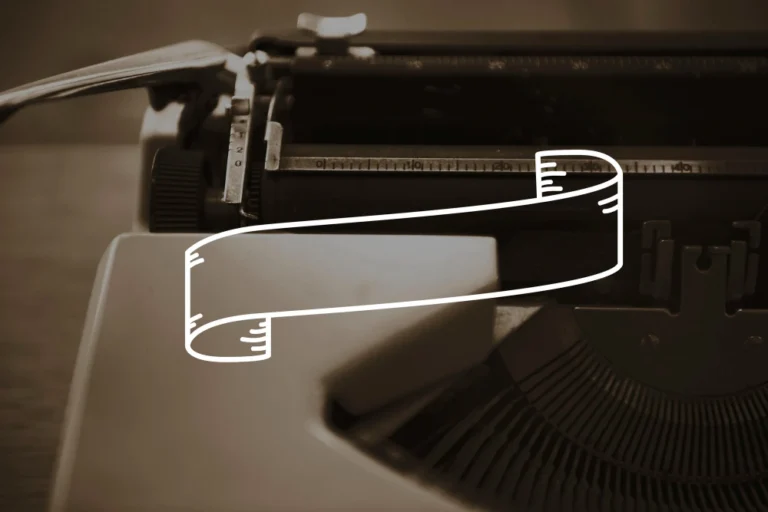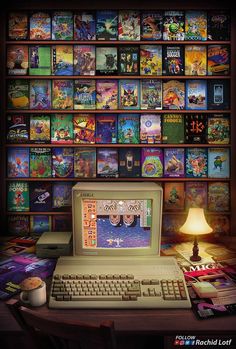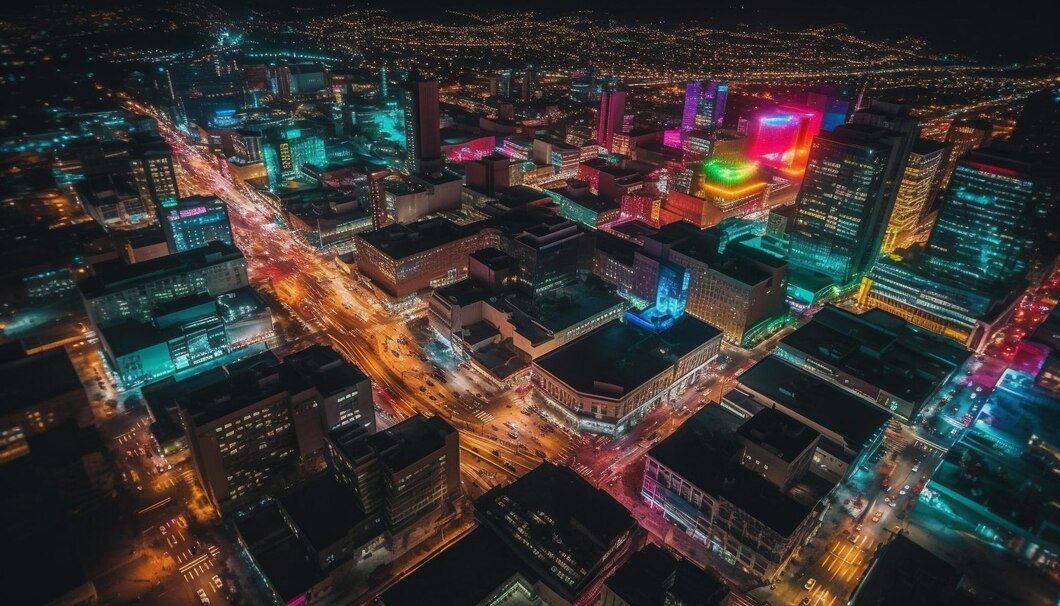
Remember the early days of the internet, before algorithm-driven feeds and polished social profiles? Back then, creating a personal homepage felt like claiming your own patch of digital land. It was a time of raw creativity and individuality—an era now immortalized in the GeoCities history.
As the go-to platform for amateur web creators, GeoCities gave users the tools to build vibrant, quirky, and often chaotic websites that reflected their passions and personalities. From animated GIFs to guestbooks, GeoCities was the heart of web expression in the 1990s and early 2000s—a true pioneer in the evolution of online identity.
Launched in 1994, GeoCities wasn’t just a web hosting service; it was a sprawling digital metropolis where millions staked their claim, building vibrant, chaotic, and utterly unique websites dedicated to everything from Star Trek fan fiction to Beanie Baby collections.
Armed with rudimentary HTML, flashing GIFs, and auto-playing MIDI tunes, users constructed digital identities brick by pixelated brick [Google Search]. It was a time of unbridled, often aesthetically questionable, personal expression online [Google Search].
Fast forward to today, and personal expression primarily lives within the sleek, templated confines of platforms like Instagram, Facebook, and TikTok. How did we get from the quirky neighborhoods of GeoCities to the polished, filtered world of modern social media? Let’s trace the evolution of online identity and explore what we gained, and perhaps lost, along the way.
The Dawn of Digital Homesteading: Welcome to GeoCities

GeoCities began life in 1994 as Beverly Hills Internet, founded by David Bohnett and John Rezner [Google Search]. Renamed GeoCities in 1995, its core concept was unique: organizing personal websites into virtual communities or “neighborhoods” based on content themes [Google Search]. You didn’t just get web space; you got an address, like GeoCities.com/RainForest/1234 (for environmental topics) or GeoCities.com/Area51/5678 (for sci-fi).
This structure provided context and community in the vast, largely unindexed early web [Google Search]. You could browse sites “living” nearby, discovering others who shared your niche interests, whether it was punk rock or pet care [Google Search].
Key features that fueled GeoCities’ rise:
- Free Web Hosting: It offered users unprecedented free disk space (initially around 2MB!) to build their sites, democratizing web publishing [Google Search].
- Themed Neighborhoods: Provided structure and a sense of belonging for users navigating the new online world [Google Search].
- Easy(ish) Tools: While basic HTML knowledge was helpful, GeoCities offered tools and templates to help beginners get started [Google Search].
- Community Features: Guestbooks allowed visitors to leave public messages, hit counters proudly displayed site traffic (however inflated!), and web rings connected sites with similar themes.
GeoCities, alongside contemporaries like Angelfire and Tripod, empowered millions to transition from passive consumers of the web to active creators [Google Search]. It became, for a time, one of the most visited sites on the internet, embodying the DIY spirit of the early web.
The Evolution of Online Selves: Homepages, Blogs, & Feeds
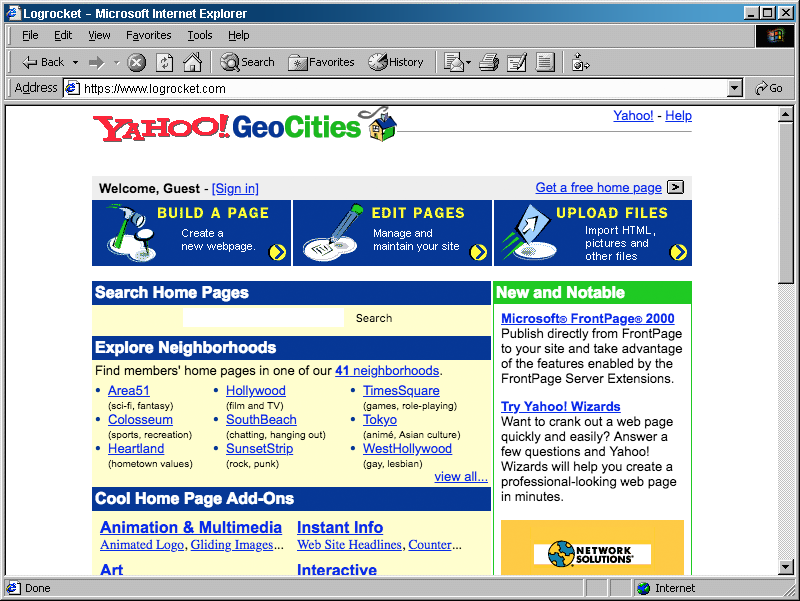
The messy, vibrant individualism of GeoCities eventually gave way to more structured, streamlined forms of online expression.
- The Personal Homepage Era (Mid-90s – Early 00s): Dominated by GeoCities, Angelfire, Tripod.
- Focus: Static pages showcasing interests, hobbies, fan content, personal updates.
- Aesthetic: Often chaotic, characterized by bright/tiled backgrounds, clashing colors, animated GIFs (especially “under construction” signs), marquee text, and embedded MIDI music [Google Search]. Design was highly individualistic, reflecting personality over polish.
- Creation: Required basic HTML knowledge or use of clunky WYSIWYG editors [Google Search].
- The Blogging Boom (Early-Mid 00s): Platforms like LiveJournal (1999) and Blogger (1999, acquired by Google 2003) gained prominence [Google Search].
- Focus: Chronological entries (posts), personal journaling, commentary, community interaction through comments.
- Aesthetic: More template-driven, offering customization but within defined structures. Cleaner layouts became more common.
- Creation: Simplified interfaces; no HTML knowledge required for basic posting.
- The Rise of Social Networking (Mid 00s – Present): Friendster (2002), MySpace (2003), Facebook (2004), Twitter (2006), Instagram (2010) shifted the paradigm [Google Search].
- Focus: Profiles, status updates, friend connections, content feeds (photos, videos, links, short text). Personal expression mediated through platform features and algorithms.
- Aesthetic: Highly templated profiles (MySpace allowed extensive HTML/CSS customization, a callback to GeoCities). Feeds became the primary interface, emphasizing ephemeral content streams over static pages. Mobile-first design dominates.
- Creation: App-based interfaces, content uploaded into predefined formats (posts, stories, reels). Customization often limited to profile pictures and bios [Google Search].
This evolution reflects a shift from building a destination (your homepage) to participating in a stream (your feed). While platforms became easier to use, the scope for radical visual self-expression arguably narrowed [Google Search].
“Technical” Specs: Platforms for Personal Expression
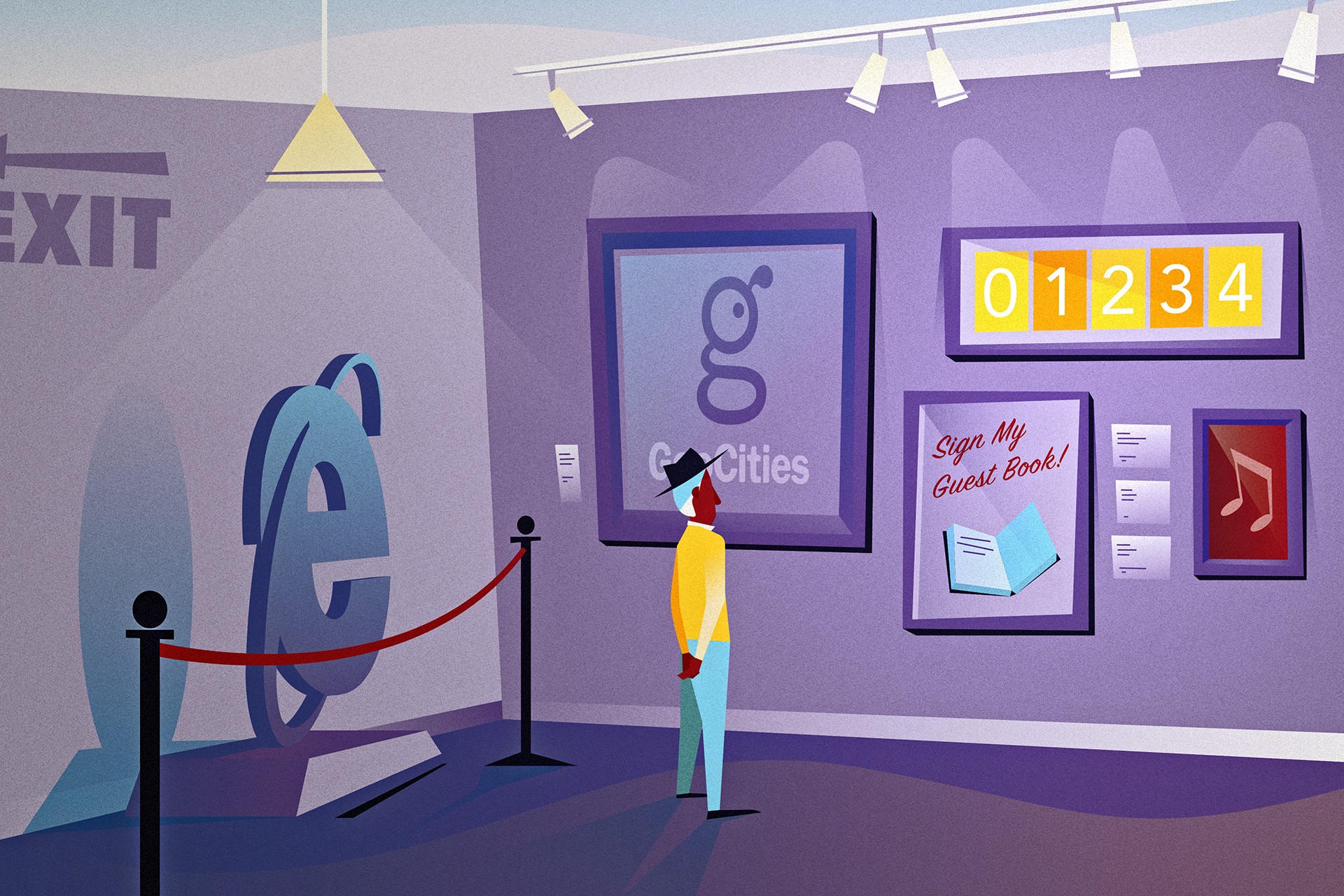
Let’s compare the technical and user-experience aspects across these eras:
| Feature | GeoCities Era (Late 90s) | Blogging Era (Early/Mid 00s) | Modern Social Media (e.g., Instagram) |
| Primary Unit | Static HTML Page(s) | Chronological Blog Post | Feed Post / Story / Profile |
| Customization | High (HTML/CSS – often chaotic) | Moderate (Templates, some CSS) | Low (Profile pics, bio, filters) |
| Ease of Use | Moderate (HTML/Editors required) | High (WYSIWYG editors) | Very High (Mobile App Interface) |
| Content Focus | Niche Interests, Personal Info | Personal Journaling, Commentary | Lifestyle, Visuals, Status Updates |
| Storage Space | Very Limited (e.g., 2MB-15MB) | Generally Ample for Text | Effectively Unlimited (Cloud-based) |
| Community | Guestbooks, Web Rings, Email | Comments, Blogrolls | Likes, Comments, Shares, Follows |
| Discovery | Neighborhoods, Web Rings, Search | Blog Directories, Links | Algorithmic Feeds, Hashtags, Explore |
| Primary Device | Desktop Computer | Desktop Computer | Mobile Phone |
| Identity Model | Pseudonymous/Interest-based | Pseudonymous/Real Name | Often Real Name / Curated Persona |
Export to Sheets
The trend shows increasing ease of use and broader reach, but often at the expense of deep customization and control over presentation. We moved from digital canvases to digital templates [Google Search].
Cultural Impact: From Digital Neighborhoods to Filterworld

GeoCities and its successors profoundly shaped internet culture and how we see ourselves online.
- Democratization of Publishing: GeoCities gave millions their first taste of web creation, lowering the barrier to having an online presence.
- Niche Community Formation: The neighborhood concept fostered early online communities around shared interests, however obscure [Google Search].
- Early Digital Identity: GeoCities pages were often raw, unfiltered expressions of personality and passion, quirks and all. The “Under Construction” GIF became a symbol of the web’s (and the user’s) perpetual state of becoming.
- The Rise of the Personal Brand: As platforms shifted towards profiles and feeds (Blogger, MySpace, Facebook, Instagram), the focus moved from showcasing interests to showcasing the self. Online identity became more curated, performative, and intertwined with social validation (likes, followers).
- Templated Selves: While easier to use, modern platforms offer less room for unique visual identity. Profiles look largely similar, guided by the platform’s design rather than individual creativity [Google Search]. Author Kyle Chayka notes, “Digital life became increasingly templated, a set of boxes to fill in rather than a canvas to cover in your own image” [Google Search].
- Algorithmic Curation & “Filterworld”: Today’s experience is heavily shaped by algorithms that show us content based on predicted engagement, often reinforcing our biases and creating echo chambers (what Chayka calls “Filterworld”) [Google Search]. Discovery feels less serendipitous than stumbling through GeoCities neighborhoods.
The journey reflects a broader shift from an open, slightly chaotic web built by amateurs to a more centralized, polished, and algorithmically-driven internet dominated by major platforms.
Collector’s Corner: Archiving the Lost City

When Yahoo acquired GeoCities for a staggering $3.5 billion in 1999, its future seemed bright [Google Search]. But by 2009, facing competition from newer social platforms, Yahoo shut down the main US service, deleting potentially 38 million websites. This sparked outrage and a massive volunteer effort to save this chunk of digital history.
- The Archiving Effort: Groups like the Internet Archive, Archive Team, and individuals like Jason Scott scrambled to download as much of GeoCities as possible before the shutdown [Google Search]. While not complete, they preserved terabytes of data [Google Search].
- Where to Find Remains:
- Internet Archive’s Wayback Machine: The most comprehensive public archive. You can search for old GeoCities URLs (if you remember them!) [Google Search].
- Oocities.org: Another significant mirror of GeoCities content [Google Search].
- Geocities.ws & ReoCities: These were other notable mirrors, though their availability may vary [Google Search].
- Digital Artifacts: While physical GeoCities collectibles are rare (perhaps some early promotional material), the true “collection” lies in exploring these archives, experiencing the raw digital artifacts of the early web. Projects like GifCities by the Internet Archive specifically preserve the animated GIFs that defined the era [Google Search].
- The “Digital Dark Age”: The potential loss of GeoCities highlighted the fragility of digital history. Data stored on proprietary platforms is vulnerable to corporate decisions, technical failures, and format obsolescence, risking a “digital dark age” where huge swathes of our cultural record disappear [Google Search].
Exploring GeoCities archives is like digital archaeology – sifting through the remnants of a lost civilization, piecing together the lives and passions of early internet pioneers [Google Search].
Why We Miss the Blinking Text & MIDI Music

Why the nostalgia for something often described as ugly and chaotic?
- Unfettered Self-Expression: GeoCities was a space where you could be unapologetically you. Your page could be weird, niche, messy, and deeply personal without judgment based on slick design or follower counts.
- Creative Freedom: Working within (or breaking!) the limits of basic HTML offered a different kind of creative challenge and satisfaction compared to filling in a profile template [Google Search].
- Authenticity: Before “personal branding” became ubiquitous, GeoCities pages often felt more authentic and less performative. It was about sharing passions, not optimizing engagement.
- Serendipitous Discovery: Stumbling upon a quirky page in a random neighborhood felt like genuine exploration, unlike the algorithmically tailored suggestions of today [Google Search].
- A Sense of Place: The neighborhood metaphor, however flawed, created a sense of belonging and community context that feels absent in the vast, undifferentiated space of modern feeds [Google Search].
- Simpler Times: GeoCities represents an earlier, perhaps more innocent, phase of the internet, before the pressures of constant connectivity, algorithmic manipulation, and online toxicity became so pervasive [Google Search].
We don’t necessarily miss broken image links or eye-searing backgrounds, but we miss the spirit of GeoCities – the freedom, the creativity, the lack of polish, and the feeling of building your own unique home online [Google Search].
From Homestead to High-Rise: The Legacy of Personal Space Online
GeoCities was a messy, glorious experiment in digital self-expression. It empowered ordinary people to become publishers, community builders, and digital architects, shaping the early web’s culture and aesthetic. Its demise served as a stark warning about the ephemerality of digital culture and the importance of preservation efforts [Google Search].
The evolution from GeoCities’ customizable plots to Instagram’s polished panes reflects the internet’s journey towards centralization, commercialization, and algorithmic control. While modern platforms offer unparalleled ease and reach, they often sacrifice the raw creativity and quirky individualism that defined the GeoCities era [Google Search].
The legacy of GeoCities isn’t just in the archives; it’s in the ongoing tension between personal expression and platform constraints, between the messy reality of human interests and the curated perfection of the online feed. It reminds us that the web was once, and perhaps could be again, a place you built yourself.
